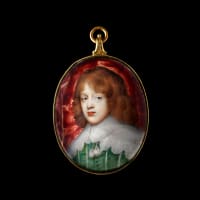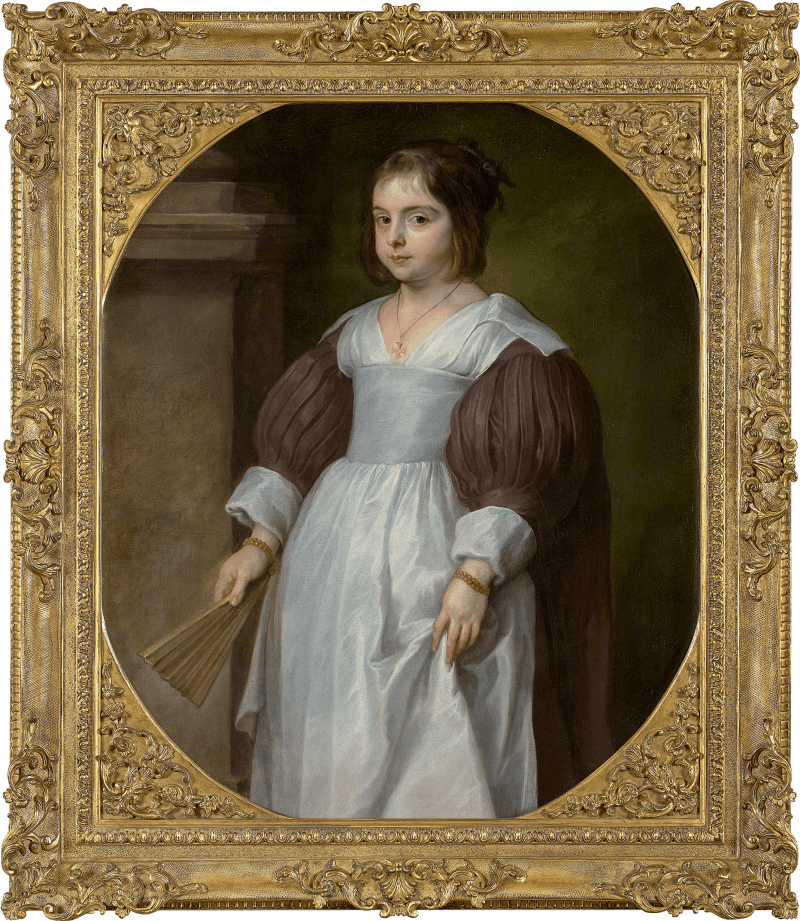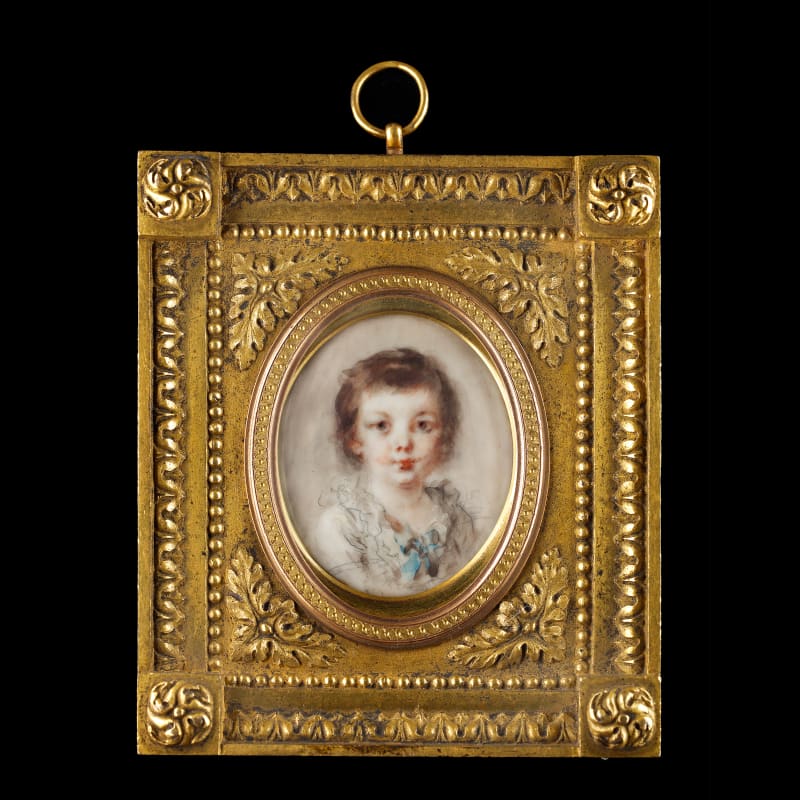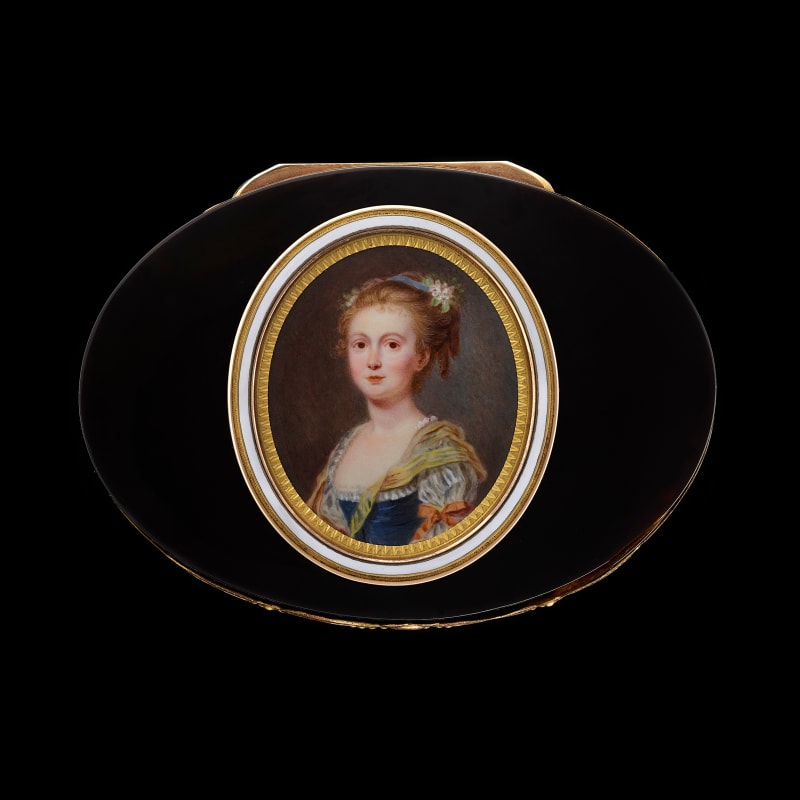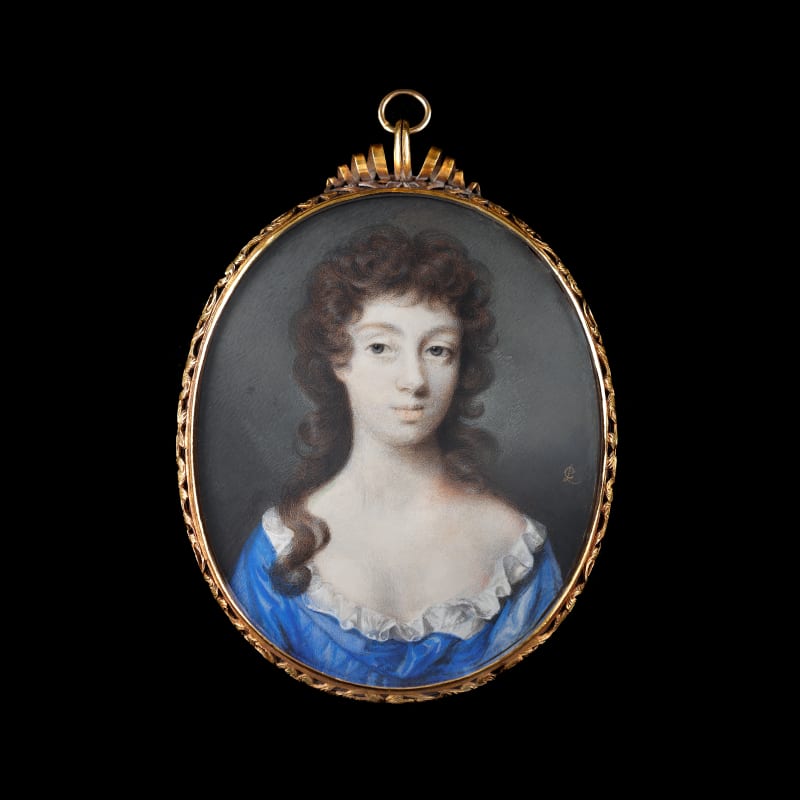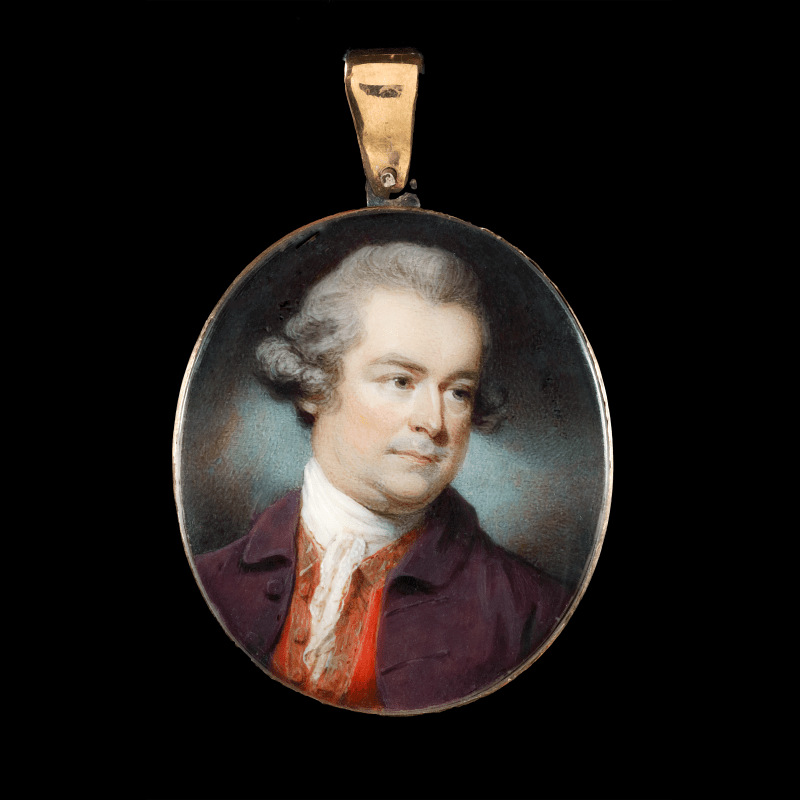A later copy of this portrait miniature is in the Victoria and Albert Museum in London, described as ‘pseudo 1630s’ [EVANS.51], after an ‘a superb miniature (?by Alexander Cooper)’. The existence of this later copy gives clues to the probable identity of the sitter as 5th Earl of Pembroke, as Malcom Rogers suggested that the previously incorrect identification of the young man as ‘Carnarvon’ could be due to ‘family muddle’.[1] Carnarvon was brother-in-law to Philip, 5th Earl of Pembroke. Rogers noted striking physical similarities between the 5th Earl and this portrait, including the sitter’s distinctive auburn locks. This can be seen most clearly in the most ambitious painting ever made by Anthony van Dyck, (almost seventeen feet wide and eleven deep), Philip Herbert, 4th Earl of Pembroke, and his Family c.1635. This portrait, which celebrates a marriage alliance between the Earl’s eldest son Charles and Mary Villiers, daughter of the Duke of Buckingham, shows a relaxed and confident Philip dressed...
A later copy of this portrait miniature is in the Victoria and Albert Museum in London, described as ‘pseudo 1630s’ [EVANS.51], after an ‘a superb miniature (?by Alexander Cooper)’. The existence of this later copy gives clues to the probable identity of the sitter as 5th Earl of Pembroke, as Malcom Rogers suggested that the previously incorrect identification of the young man as ‘Carnarvon’ could be due to ‘family muddle’.[1] Carnarvon was brother-in-law to Philip, 5th Earl of Pembroke. Rogers noted striking physical similarities between the 5th Earl and this portrait, including the sitter’s distinctive auburn locks. This can be seen most clearly in the most ambitious painting ever made by Anthony van Dyck, (almost seventeen feet wide and eleven deep), Philip Herbert, 4th Earl of Pembroke, and his Family c.1635. This portrait, which celebrates a marriage alliance between the Earl’s eldest son Charles and Mary Villiers, daughter of the Duke of Buckingham, shows a relaxed and confident Philip dressed in sumptuous gold. This impression of the young man may also be a reflection on contemporary court gossip, which circulated that Mary had fallen in love with him and not with his elder brother to whom she was betrothed.
The face in Alexander Cooper’s portrait is an independent type but aligns most closely in date with the portrait of the 5th Earl by Van Dyck, known from a near-contemporary engraving by Pierre Lombart [see NPG D26556]. Painted by Alexander, Samuel Cooper’s younger brother, the miniature may have been commissioned between 1635 and 1637 when Philip was travelling in France and Italy. Cooper’s movements at this time are difficult to trace – he may have been assisting his uncle John Hoskins and brother Samuel, both of whom had strong professional and personal ties to Van Dyck, or he may have begun his career abroad, beginning at courts of France and Italy. A group of portraits painted by Alexander Cooper in the early 1630s of Elizabeth of Bohemia and her family were likely painted in the Netherlands, but lack of documentary evidence has made it impossible to accurately track this peripatetic artist.
This portrait of Philip Herbert, if datable to circa 1635, shows him just prior to being styled as ‘Lord Herbert’ and his subsequent marriage, in 1639, to Penelope nèe Naunton. Philip’s career was a mixture of political and military duty. He inherited the title from his father in 1649, becoming 5th Earl of Pembroke, the same year that Charles I was executed. In the lead up to this momentous event, which led to the Interregnum, Philip as 5th Earl sat for Wiltshire (Short Parliament) and Glamorgan (Long Parliament) and sided with the Parliamentarians in the civil wars. In 1649 he married again, this time to Katherine Villiers (d. 1678), daughter of Sir William Villiers and Rebecca Roper. In 1655 he was appointed a militia commissioner for south Wales, and in 1659 the council of state accepted his offer to raise a regiment of horse at his own charge.
Philip’s loyalty changed once the Restoration of Charles II took place in 1660 and the king forgave him to the extent that he was appointed as councillor for trade and navigation. A practical man rather than an academic, he dabbled in chemistry and medicine with some success. He died in 1669 and was buried in Salisbury Cathedral on Christmas eve of that year.
[1] J. Murdoch, Seventeenth Century Miniatures in the Collection of the Victoria and Albert Museum, London, 1997, p.




